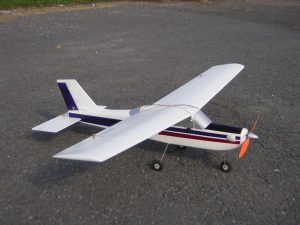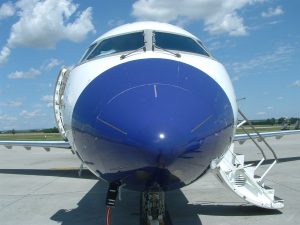Advanced Training in Risk Management in Airline Pilot Standards (APS) Courses
 In the high-stakes world of aviation, effective risk management is paramount. Airline Pilot Standards (APS) courses provide advanced training in risk management, equipping pilots with the knowledge and skills necessary to identify, assess, and mitigate risks. This article explores the importance of risk management in aviation, the key components of risk management training in APS courses, and how this training contributes to safer and more efficient flight operations.
In the high-stakes world of aviation, effective risk management is paramount. Airline Pilot Standards (APS) courses provide advanced training in risk management, equipping pilots with the knowledge and skills necessary to identify, assess, and mitigate risks. This article explores the importance of risk management in aviation, the key components of risk management training in APS courses, and how this training contributes to safer and more efficient flight operations.
Importance of risk management in aviation
Aviation involves complex systems and dynamic environments, making it inherently risky. From mechanical failures and weather phenomena to human errors and security threats, numerous factors can impact the safety of flight operations. Effective risk management is essential to navigate these challenges and ensure the safety of passengers, crew, and aircraft.
Risk management in aviation is not just about reacting to incidents; it is about proactively identifying potential hazards and implementing measures to prevent accidents. This proactive approach is central to the philosophy of APS courses, which aim to instil a deep understanding of risk management principles in aspiring pilots.
Key components of risk management training in APS Courses
Risk management training in APS courses is comprehensive, covering various aspects of hazard identification, risk assessment, and mitigation strategies. The training is designed to develop a proactive mindset, enabling pilots to anticipate and address potential risks before they escalate into serious issues.
Hazard identification
The first step in risk management is identifying potential hazards. APS courses teach pilots to recognize a wide range of hazards that can affect flight operations. These hazards can be categorised into several types:
-
- Operational hazards: These include mechanical failures, fuel issues, navigation errors, and other operational aspects that can impact flight safety.
- Environmental hazards: Weather conditions, wildlife, and terrain are examples of environmental factors that can pose risks to aviation.
- Human factors: Human errors, fatigue, communication breakdowns, and other human-related issues are critical hazards in aviation.
- Security threats: Unlawful interference, terrorism, and other security threats are significant concerns in aviation risk management.
Pilots learn to use various tools and techniques to identify these hazards, including checklists, pre-flight briefings, and real-time monitoring systems. They are trained to remain vigilant and continuously scan for potential risks throughout all phases of flight.
Risk assessment
Once hazards are identified, the next step is to assess the associated risks. Risk assessment involves evaluating the likelihood and severity of each hazard, allowing pilots to prioritize their responses. APS courses teach several risk assessment models and frameworks, including:
-
- Risk matrix: This is a widely used tool that helps pilots categorize risks based on their probability and impact. By plotting hazards on a risk matrix, pilots can determine which risks require immediate attention and which can be monitored.
- Threat and Error Management (TEM): TEM is a proactive approach that focuses on identifying threats and errors before they lead to accidents. Pilots learn to anticipate potential threats, recognize errors, and implement strategies to mitigate their impact.
- Bow-tie model: This model visualises the pathways from hazard to potential outcomes, highlighting preventive and mitigative measures. It helps pilots understand the relationships between hazards, threats, and defenses.
Through practical exercises and simulations, pilots gain hands-on experience in applying these risk assessment techniques. They learn to make informed decisions based on a thorough analysis of risks, enhancing their ability to manage complex and dynamic situations.
Risk mitigation
Risk mitigation involves implementing measures to reduce the likelihood and impact of identified risks. APS courses cover various strategies for mitigating risks, emphasising a multi-layered approach that includes:
-
- Standard Operating Procedures (SOPs): SOPs provide structured guidelines for handling different phases of flight. By adhering to SOPs, pilots can minimise the risk of errors and ensure consistent, safe operations.
- Checklists: Checklists are essential tools for verifying that all necessary actions have been completed. APS courses train pilots to use checklists effectively, ensuring that critical steps are not overlooked.
- Crew resource management (CRM): CRM focuses on enhancing teamwork, communication, and decision-making among the flight crew. Effective CRM practices help prevent misunderstandings and ensure that all crew members are aware of potential risks and their roles in managing them.
- Automation and technology: Advanced avionics and automation systems play a crucial role in risk mitigation. APS courses include training on the use of these technologies, helping pilots leverage them to enhance situational awareness and reduce workload.
- Continuous monitoring and feedback: Pilots are trained to continuously monitor flight conditions and provide feedback on risk management practices. This continuous improvement process helps identify areas for enhancement and ensures that risk management strategies remain effective.
Integrating risk management into flight operations
Effective risk management is not limited to specific procedures or checklists; it is an integral part of every aspect of flight operations. APS courses emphasise the importance of integrating risk management into daily practices, fostering a culture of safety and vigilance among pilots.
Pre-flight risk management
Pre-flight preparations are critical for identifying and mitigating risks before takeoff. APS courses teach pilots to conduct thorough pre-flight briefings, covering all potential hazards and contingency plans. This includes reviewing weather conditions, assessing aircraft performance, and verifying that all necessary equipment and documentation are on board.
Pilots learn to use risk assessment tools during the pre-flight phase, such as the risk matrix and threat identification checklists. By proactively addressing potential risks, pilots can ensure that they are well-prepared for the flight ahead.
In-flight risk management
In-flight risk management involves continuously monitoring and responding to dynamic conditions. APS courses train pilots to remain vigilant and adaptable, using real-time data and communication to manage risks effectively. Key aspects of in-flight risk management include:
-
- Situational awareness: Maintaining situational awareness is crucial for identifying and responding to emerging threats. Pilots learn to use advanced avionics, radar systems, and other tools to stay informed about their environment and make timely decisions.
- Decision-making: Effective decision-making is at the heart of in-flight risk management. APS courses teach pilots to use structured decision-making processes, such as the OODA loop (Observe, Orient, Decide, Act), to evaluate options and choose the best course of action.
- Communication: Clear and effective communication is essential for coordinating risk management efforts. Pilots are trained to use standard phraseology and protocols to ensure that all crew members and air traffic controllers are aware of potential risks and the actions being taken to mitigate them.
Post-flight risk management
Post-flight risk management involves reviewing the flight and identifying any lessons learned. APS courses emphasize the importance of conducting thorough post-flight debriefings, where pilots can discuss any issues encountered and evaluate the effectiveness of risk management strategies.
By documenting and analyzing post-flight data, pilots and airlines can identify trends, refine procedures, and enhance overall safety. This continuous improvement process is a key component of advanced risk management training in APS courses.
Role of technology in risk management
Advancements in technology have transformed risk management in aviation, providing pilots with powerful tools for identifying, assessing, and mitigating risks. APS courses integrate training on the latest technologies, ensuring that pilots are proficient in their use and understand how to leverage them for effective risk management.
Flight Data Monitoring (FDM)
Flight Data Monitoring (FDM) involves the continuous recording and analysis of flight data to identify potential safety issues. APS courses teach pilots to interpret FDM data and use it to enhance risk management practices. By monitoring parameters such as airspeed, altitude, and engine performance, pilots can detect anomalies and address them proactively.
Automated risk assessment tools
Automated risk assessment tools use algorithms and data analytics to evaluate potential risks in real-time. APS courses include training on these tools, helping pilots understand how to use them for dynamic risk assessment. These tools can analyse vast amounts of data, providing pilots with insights into weather patterns, traffic congestion, and other factors that may impact flight safety.
Enhanced Ground Proximity Warning System (EGPWS)
The Enhanced Ground Proximity Warning System (EGPWS) provides real-time alerts to pilots about potential terrain conflicts. APS courses cover the use of EGPWS, helping pilots understand how to respond to alerts and take corrective actions. This technology enhances situational awareness and reduces the risk of controlled flight into terrain (CFIT) incidents.
Human factors in risk management
Human factors play a significant role in aviation safety and risk management. APS courses address various human factors, teaching pilots to recognise and mitigate issues related to human performance and behavior.
Fatigue Management
Fatigue is a critical human factor that can impair decision-making and performance. APS courses include training on fatigue management, teaching pilots to recognize the signs of fatigue and implement strategies to mitigate its impact. This includes adhering to rest requirements, using fatigue risk management systems (FRMS), and promoting healthy sleep habits.
Stress and situational awareness
Stress can affect situational awareness and decision-making abilities. APS courses train pilots to manage stress effectively, using techniques such as controlled breathing, mindfulness, and workload management. By maintaining situational awareness and managing stress, pilots can make better decisions and respond to risks more effectively.
Communication and teamwork
Effective communication and teamwork are essential for managing risks in a dynamic environment. APS courses emphasize the importance of Crew Resource Management (CRM), teaching pilots to communicate clearly, share information, and work collaboratively to address risks. By fostering a culture of teamwork and open communication, pilots can enhance overall safety and reduce the potential for errors.
Regulatory and industry standards
Risk management in aviation is governed by strict regulatory and industry standards. APS courses ensure that pilots are well-versed in these standards and understand their role in maintaining compliance.
International Civil Aviation Organization (ICAO)
The International Civil Aviation Organization (ICAO) sets global standards for aviation safety, including risk management practices. APS courses cover ICAO guidelines, helping pilots understand the international framework for risk management and how it applies to their operations.
Federal Aviation Administration (FAA)
In the United States, the Federal Aviation Administration (FAA) mandates specific risk management practices for various types of aviation operations. APS courses include training on FAA regulations, ensuring that pilots are familiar with the requirements and understand how to implement them in their daily operations.
Industry best practices
In addition to regulatory standards, APS courses also cover industry best practices for risk management. These best practices are developed through collaboration among airlines, aviation organizations, and safety experts. By staying informed about the latest best practices, pilots can continuously improve their risk management strategies and enhance overall safety.
Future of risk management in aviation
The field of risk management in aviation is continually evolving, driven by advancements in technology, changes in regulatory standards, and the development of new best practices. APS courses play a crucial role in preparing pilots for the future of risk management, ensuring that they are equipped with the latest knowledge and skills.
Emerging technologies
Emerging technologies, such as artificial intelligence (AI) and machine learning, are expected to revolutionize risk management in aviation. These technologies can analyze vast amounts of data, identify patterns, and predict potential risks with greater accuracy. APS courses are beginning to integrate training on these technologies, preparing pilots to leverage AI and machine learning for enhanced risk management.
Global collaboration
Global collaboration is essential for addressing the complex challenges of aviation safety. APS courses emphasize the importance of participating in global safety initiatives and sharing data and best practices with other airlines and aviation organizations. By fostering a collaborative approach to risk management, pilots can contribute to a safer and more resilient aviation industry.
Simplifies aviation complexity
Advanced training in risk management is a cornerstone of Airline Pilot Standards (APS) courses, equipping pilots with the skills and knowledge necessary to navigate the complexities of modern aviation. From hazard identification and risk assessment to mitigation strategies and continuous improvement, APS courses provide a comprehensive framework for managing risks effectively. As technology advances and the aviation industry evolves, the principles of risk management taught in APS courses will remain essential, guiding pilots toward safer and more efficient flight operations. By fostering a proactive mindset and emphasising the importance of continuous learning, APS courses ensure that pilots are well-prepared to meet the challenges of today and the future.










